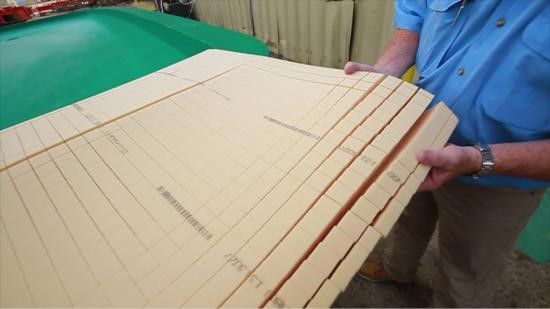5 Boating Constructs Every Boater Should Know

Going boat shopping in this day and age can be as confusing as shopping for a computer or a new car. What meets the eye is only a small portion of what you need to know about a boat, to make the best choice and get the most value for your hard-earned cash. But buyer beware—there are so many buzz words and confusing terms out there, that it can be quite difficult to cull through the marketing gobble-de-gook and figure out what really matters. Here are five key things you should know about, before buying your next boat.
1. Cored Construction

Cored construction is just what it sounds like: the boat is built with a core that is usually made of closed-cell foam, balsa wood, or a honeycomb material which is sandwiched between two (relatively thin) layers of fiberglass. The sandwich construction is much lighter than solid glass and it’s significantly stiffer. Other advantages include enhanced sound-deadening and insulating properties.
a. A bad rap – Unfortunately, cored construction has a bit of a bad rap out there in the boating world because early on it did lead to a number of problems, mostly related to de-lamination. That was decades ago.
b. The positive of today’s coring techniques – Today no one should have any concerns about buying a cored boat from a reputable builder. The process is well defined, and practices are proven to be highly successful. We have not heard of a delamination in over a decade.
c. The downside – The biggest is cost. It takes a lot more time and effort to build with modern coring techniques than it does to simply roll out more fiberglass. As a result, it’s bound to raise the overall price of a boat.
d. Balsa core below the waterline – 50 years ago a leading sailboat builder pioneered balsa cored hulls which made the boats light and stiff, and they won many races. But 15 years later many of these boats were found to have soaked up water through hydrostatic osmosis, and became quite heavy. This was before the general use of vinylester resin, which today virtually every builder uses for a skin coat or two, and few use throughout the hull. Vinylester resin stops water osmosis. So now, proper construction with balsa below the waterline should cause no problems. Balsa core is more puncture-resistant than PVC coring, and that is why some builders use it. But a solid, proper all-glass laminate is the most puncture resistant of all.
2. Deep V Hulls

“Deep V” is much bandied about construct and often used improperly. Most marine architects would consider a boat with 21 or more degrees of transom deadrise (measured at the transom—not at the entry) to be a true Deep V. Those with less are Semi V hulls, and those with none are flat-bottom boats.
a. As a general rule of thumb – Deep V boats are best for smoothing out the bumps in heavy seas, but they also aren’t the greatest when it comes to stability. Flat-bottom boats do best in that regard, and as you might guess, Semi V hull boats lie somewhere in-between on both counts.
3. Notched Transom

The big misconception with this term is that many people mistakenly use it to describe transoms with a low, cut-out section in the middle, where the outboard is mounted. This is actually a “cut-out” transom; the term “notched transom” describes what’s below the waterline.
a. The Construct – Some feel that a notched transom improves performance slightly, acting something like an outboard bracket. It is mostly found on small boat hulls.
4. Resin Infusion

The resin infusion process encapsulates the fiberglass schedule (or other composite materials, like Kevlar or carbon fiber) with plastic sheeting which has a number of tubes attached to it. A vacuum pump is used to suck all the air out of the plastic, drawing resin in through the tubes. The vacuum then pulls the resin through the fiberglass.
a. Optimizing the resin-to-fiberglass ratio – Since the builder can carefully control the entire process, it results in the optimal resin-to-fiberglass ratio.
b. Resin is brittle – Resin is key to building with fiberglass. Too little, there is incomplete lamination. Too much excess resin in the process creates a heavier more brittle part that has no additional strength.
c. A big plus – A boat built with resin infusion is generally considered superior to one that’s constructed with old-fashioned open-molding techniques.
5. Stepped Hulls

Unfortunately, there’s a lot of misconception out there about how hull steps work. Many people believe that stepped hulls create turbulence, and as the bubbles run aft, they reduce adhesion. Some say that the steps increase lift. Both assertions are false.
a. How they work – Steps work by creating a low-pressure area under the hull, which sucks in air from the notched sides. This maintains a sort of “pocket” of air, or air bubbles, under a segment of the boat. That portion of the hull doesn’t make as much contact with the water, as it would otherwise, so drag is reduced.
b. The down-side – Stepped hulls can also reduce a boat’s stability. In addition, a poorly-designed step may aerate the prop. However, we have not encountered these problems in the stepped hulls we have tested in the last 15 years.
c. The bottom line – A well-designed step is an excellent way to enhance a boat’s performance, but a poorly-designed step can be detrimental. Fortunately, the vast majority of the reputable boat-builders out there have invested a lot of time and effort into designing stepped hulls correctly.